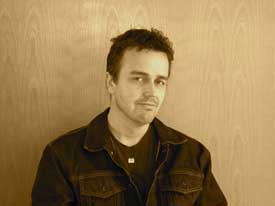'24', 'Medium' and 'Shark': Music Composed by Callery and Disklavier
 Emmy Award winner Sean Callery |
Callery earned a degree in piano performance from New England Conservatory of Music, where he also studied composition. He moved to Los Angeles in late 1987, and took a job at New England Digital, which created the Synclavier, one of the first digital audio workstations. There, he trained many composers, including Alan Sylvestri, James Newton Howard, Herbie Hancock and Mark Snow, on how to integrate this technology into their unique writing processes.
"Disklaviers have been around a while, and I think over time we sometimes forget the shock and awe we initially felt over its pioneering technology," he says, "but to this day I'm amazed at what it can do."
From 1989 to 2001, Callery composed music for a diversity of projects: the Siegfried and Roy Show in Las Vegas; "Star Trek Deep Space Nine" (his first of six Emmy nominations) and, with executive producer Joel Surnow, "La Femme Nikita", which ran on USA network for four years. In 2001 Callery and Surnow began their successful collaboration on the Fox television series, "24", starring Kiefer Sutherland, earning Callery two Emmy Awards for Outstanding Music Composition (Underscore) for a Dramatic Series. Callery also composes the music for "Medium" starring Patricia Arquette (NBC) and "Shark" starring James Woods (CBS).
In July, Callery traveled to Spain to perform excerpts from his various film and television projects with the Tenerife Orchestra, which consisted of an 85-piece orchestra and 40-piece choir. He played a piano concerto from "La Femme Nikita." "When I was working on 'Nikita', I sometimes recorded music on my Disklavier, especially when I needed a particularly pianistic and nuanced piece of music. With 'Nikita', there was no live orchestra budget. Having the opportunity to finally play the 'Nikita' music with a full orchestra and choir was thrilling," he says.
Back in the states, the pace quickened, multiplied by three shows. "It's frenetic, as usual," Callery says. "A one-hour television episode takes about five to six weeks to complete. I will typically have between four to five days to complete a score." But, adding that he recently played the Sweet & Hot Jazz Festival in LA with saxophonist John Altman, "no matter how busy I am, I play Dixieland jazz with my neighbors every Monday morning. It's important to keep mixing things up, and jamming with great players is a great way to keep you alert."
More information about Callery is available on his Web site www.seancallery.com.
